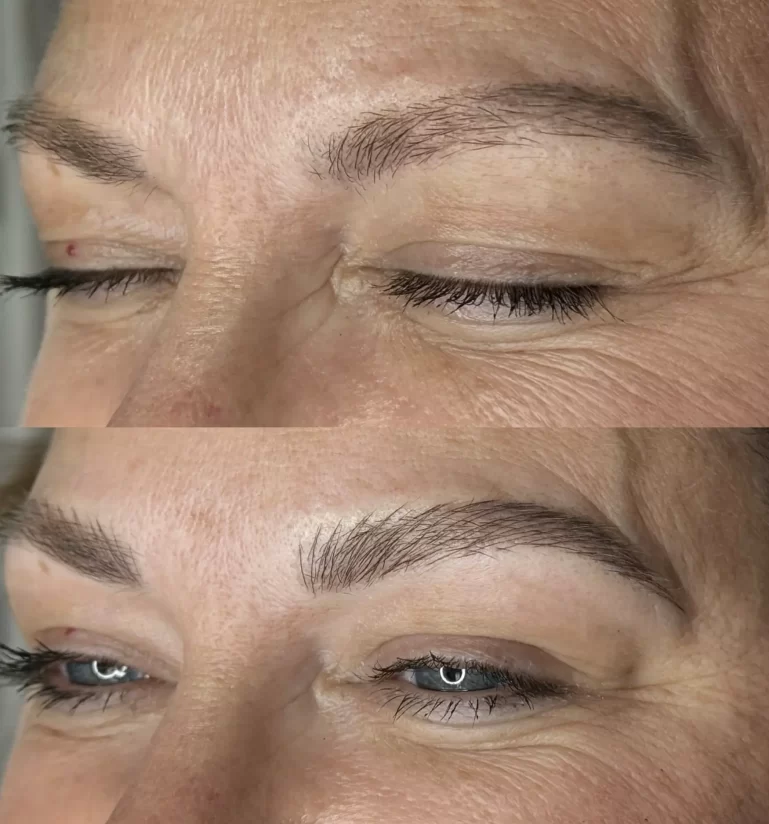
If you’ve been googling how to fix brow tattoos that are too dark? while staring at your reflection wondering where your natural features went, you’re not alone. In our Brisbane studio, we’ve helped plenty of clients who came in after a disappointing experience elsewhere—where the shape was off, the pigment was too bold, or the brow tattoo just didn’t heal the way they were promised.
The good news? Most over-darkened or heavy cosmetic tattoo results can be corrected. But it takes expert eyes, the right tools, and a healthy dose of honesty about what’s possible and what will take time. Let’s walk you through what we know really works in eyebrow tattoo corrections.
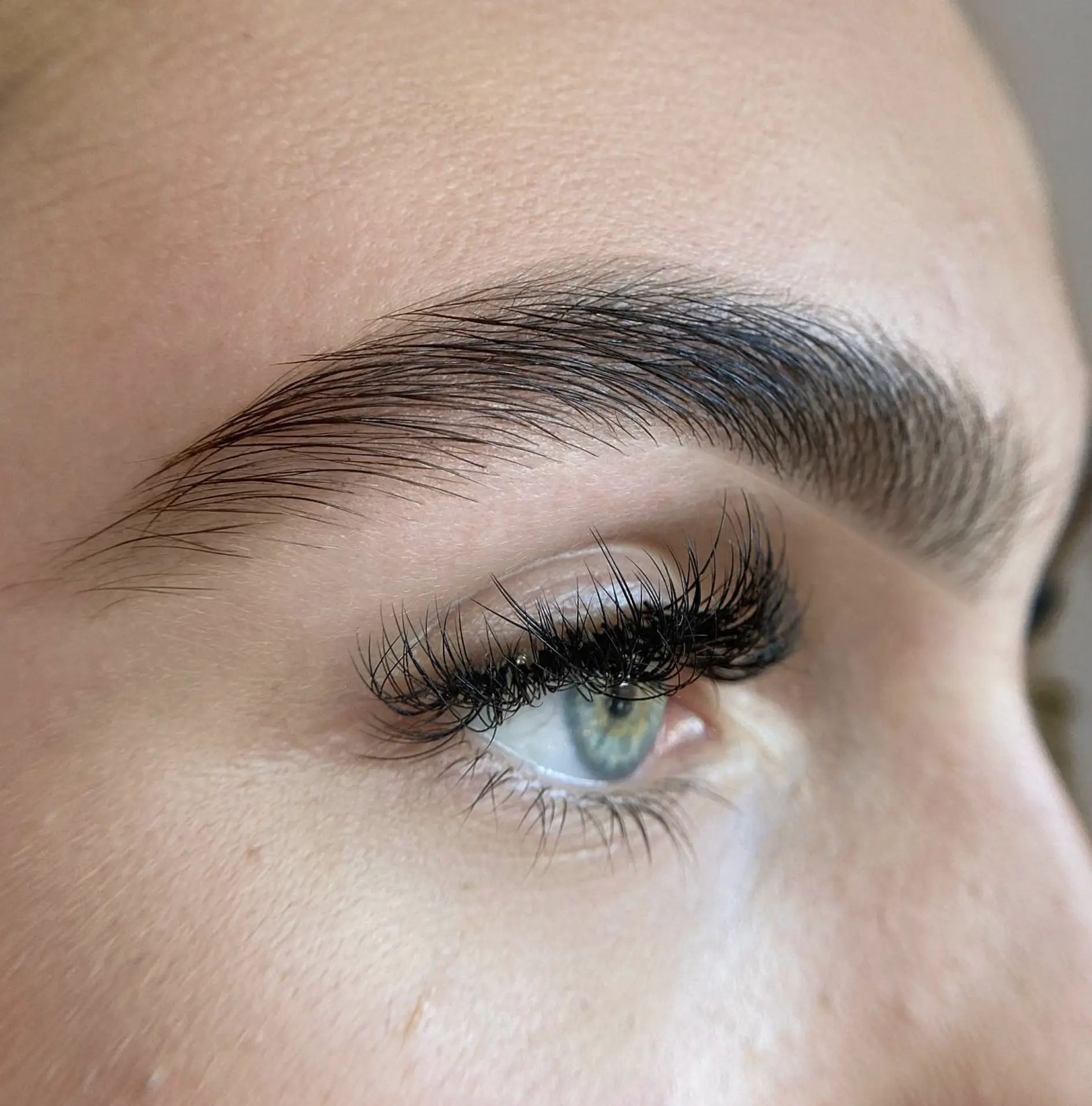
Contents
Brow tattoos go too dark: what’s happening?
Brows that heal too dark usually come down to one or more of the following:
- Pigment overload: Too much pigment packed into the skin during the initial cosmetic tattooing session
- Wrong colour choice: A cool-toned pigment on warm skin tone can heal grey, or a black-based pigment may turn bluish over time due to titanium dioxide content
- Depth issues: If the needle goes too deep, pigment settles into the dermis and can cause pigment discolouration
- Skin type: Oily skin tends to retain pigment differently, often leading to saturation or blurred microbladed brows
- Healing aftercare: Poor aftercare instructions, over-moisturising or sun exposure can all affect the healing process
We see this often in clients who’ve had cosmetic tattoo work done by undertrained artists or clinics that don’t properly assess Fitzpatrick Skin Tone or facial mapping. It’s also why our own PMU industry training in eyebrow tattooing emphasises a skin-first approach. We cover this in depth during our eyebrow tattoo training Brisbane programs.
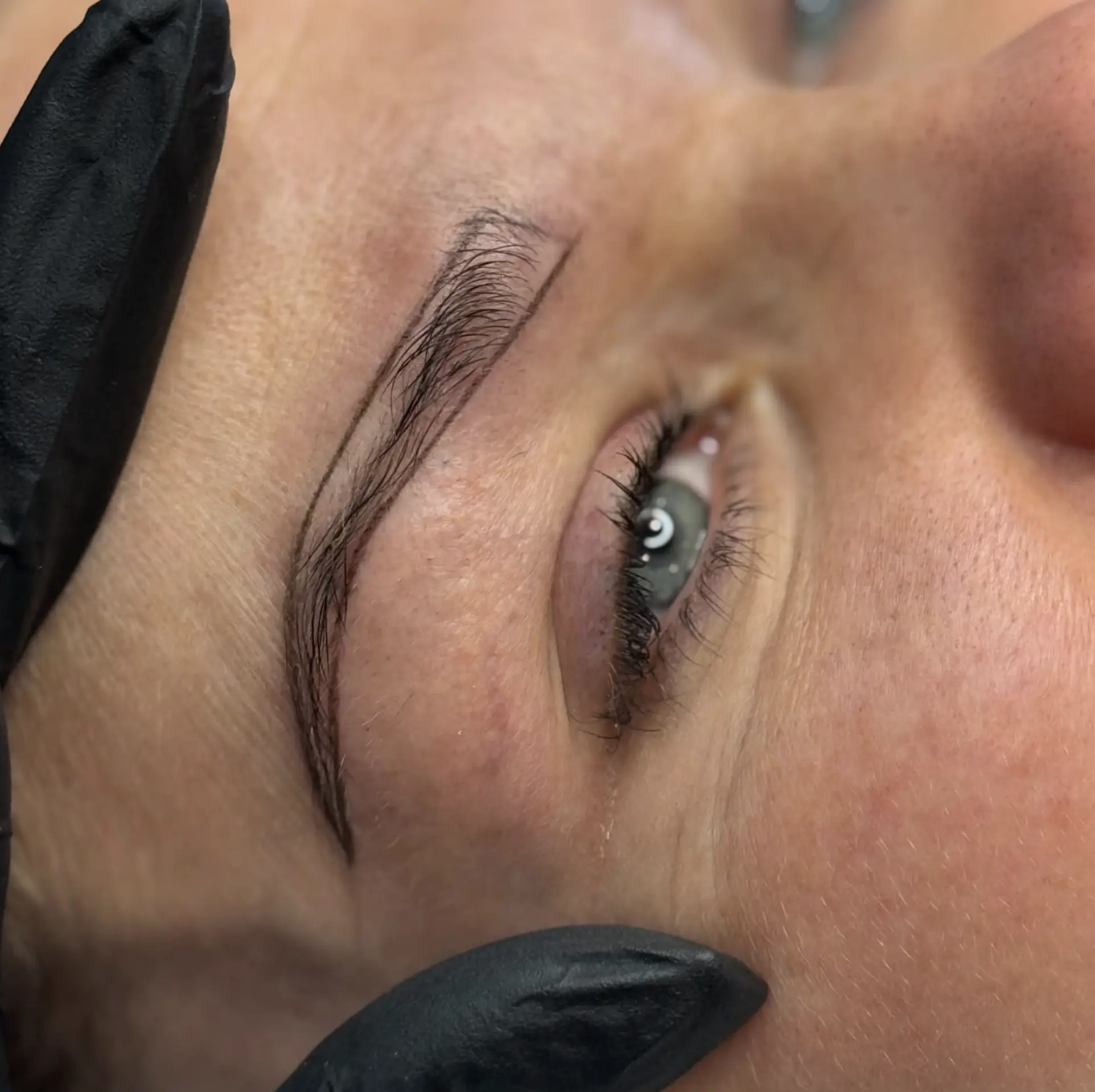
Let it heal first
If your semi-permanent eyebrow tattoo is only a few days old, don’t rush to find a fix. The healing process includes a lot of visual changes.
| Day | What to Expect |
|---|---|
| 1–3 | Brows appear darkest and boldest |
| 4–7 | Scabbing stage begins |
| 7–14 | Brows may look patchy or too light |
| 15–28 | True colour starts to settle |
During this healing period, scabbing, colour shifts, and lightness are all normal parts of the cosmetic tattooing recovery timeline. Using dry shampoo or exfoliating facial products too soon can ruin your results. Patience is key here.
From gentle lightning to full correction
We’ve corrected everything from heavy ombré brows to pigment-heavy Combination Brows that just didn’t suit the client’s skin undertone. In Brisbane’s humid climate, pigment behaves differently depending on your skin health and the cosmetic tattoo method used.
1. Saline removal
Perfect for recent tattoos or mild oversaturation. We use a saline solution made with sea salt to lift pigment gradually out of the skin. This is great for:
- People avoiding laser treatment
- Lifting cool-toned pigments before colour correction
- Clients with reactive skin or skin infections history
Sessions: 2–5 required. Interval: 6–8 weeks apart. Always followed with aftercare instructions involving cotton wool cleansing and skin pads.
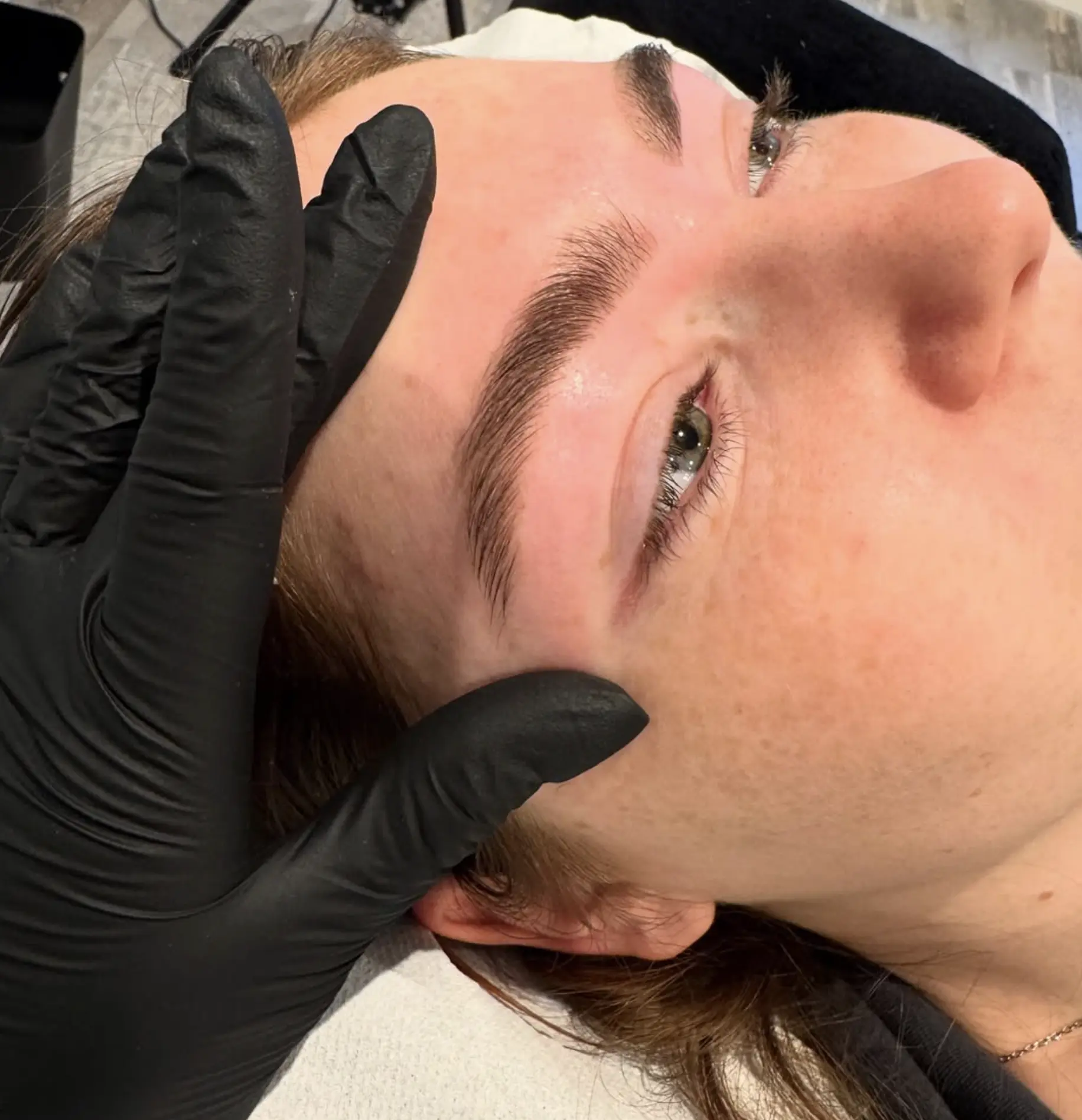
2. Laser removal
Laser tattoo removal is best for deep, stubborn pigment or old cosmetic tattoos. We refer clients to qualified plastic surgeons or laser therapy clinics for this.
Laser removal is powerful, but timing it correctly with your corrective tattooing plan is crucial to avoid overexposure or skin thinning. And yes—it requires a careful approach for skin healing.
3. Colour correction (with the colour wheel in hand)
One of the trickiest (and most satisfying) parts of corrective tattooing. Using colour theory and complementary colours, we apply a neutraliser ink or colour corrector to shift brows from grey, blue or green tones back to warm, flattering colours.
This is where our brow artists use high-end pigments and deep knowledge of the colour wheel to match your exact skin undertone. We factor in all of it: your Fitzpatrick Skin Tone, oily skin risks and the previous pigment base (especially those heavy in titanium dioxide).
If you’re a cosmetic tattoo artist looking to upskill in these techniques, our eyebrow tattoo training programs go into real correction cases and advanced pigment strategies.
4. Shape reshaping with advanced methods
Not all corrections involve lightening or neutralising pigment. Some clients need shape adjustments—say, correcting harsh ombré brows or squaring off unflattering arches.
We blend shading, nano strokes, Feathering Technique, or Nano Combination Brow work to create new, softer results. We also assess existing brow makeup habits—like overuse of brow pencil or brow powder—and tailor your look accordingly.
How to prep for your correction session
Healthy skin is everything in the PMU industry. Before we begin laser treatment, saline removal, or colour work, your skin needs to be clear of disruptions.
Pre-appointment checklist:
- No chemical peel, glycolic acid peel or anaesthetic creams for 4 weeks
- Stop exfoliating facial products 10 days prior
- Avoid lemon juice, hydrogen peroxide, or baking soda DIYs
- Skip brow gel, brow makeup, or brow pencil the day of the appointment
- Hydrate internally and externally
- Bring photos of the brow tattoo post-treatment if done elsewhere
Lightning
We get the desperation. But chemical lightning hacks can make your correction harder, not easier.
Avoid using:
- Glycolic acid (or any AHA)
- Hydrogen peroxide
- Lemon juice or baking soda mixtures
- Skin-bleaching products with no PMU industry approval
These not only fail to fade pigment but often inflame the skin, delay healing and make proper corrective tattooing harder later on.
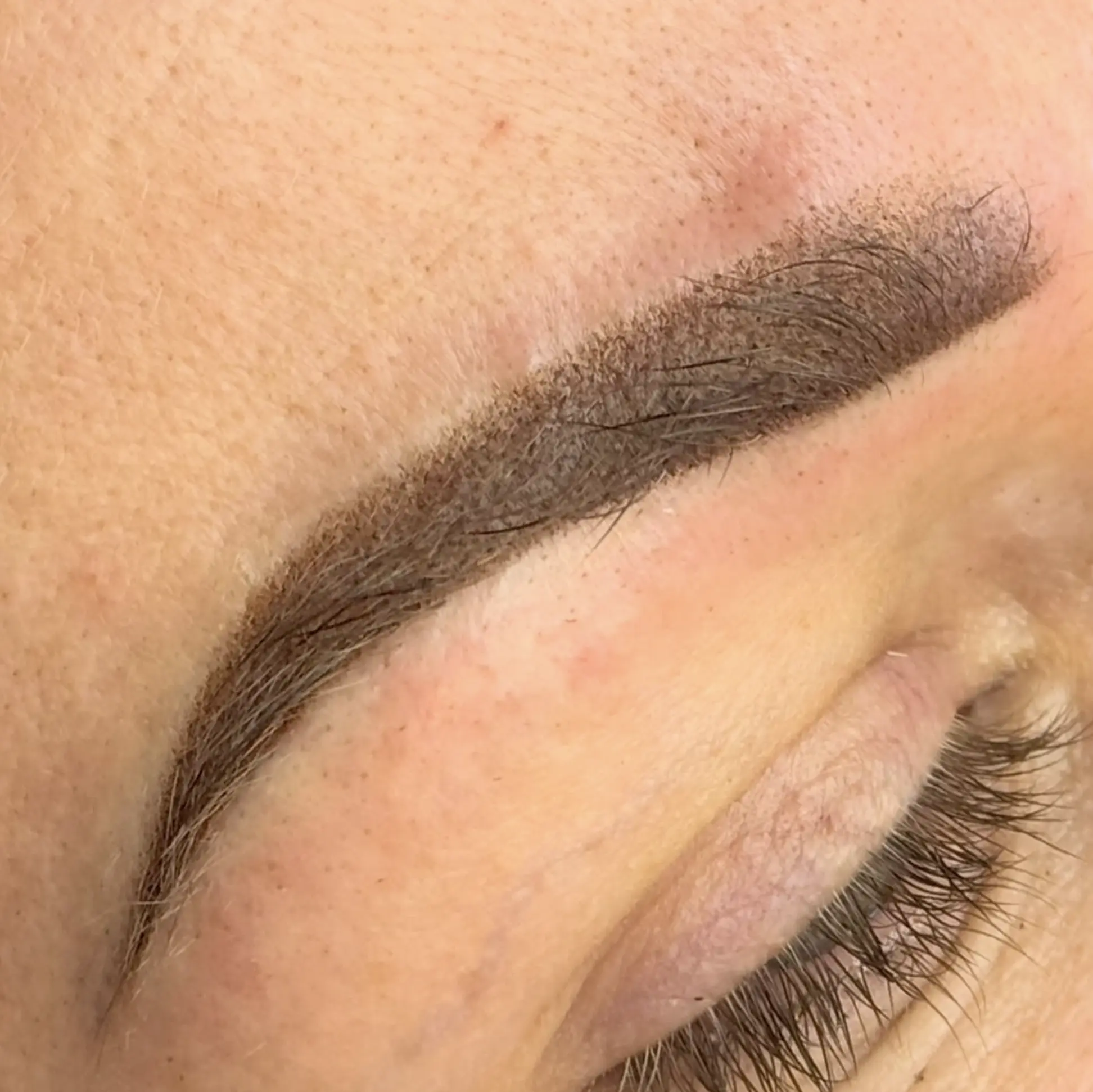
Client case study: From Sharpie to softly shaded
We had a client with a permanent makeup brow tattoo that had healed into dense, dark arches. Her skin tone was medium with warm undertones, but the pigment had oxidised into a charcoal hue. She’d been using brow makeup daily to soften the effect—think brow gel, angled brush, spoolie brush—just to feel comfortable.
We did:
- Two saline tattoo removal sessions
- Waited through the full healing period
- Used a warm colour corrector pigment with complementary colours
- Finished with a Nano Combination Brow for natural fullness
End result: balanced brows, better skin health and no more dependence on brow powder. She told us it changed how she felt every morning.
She was so inspired that she later enrolled in our brow tattoo training Brisbane course to become a certified artist herself.
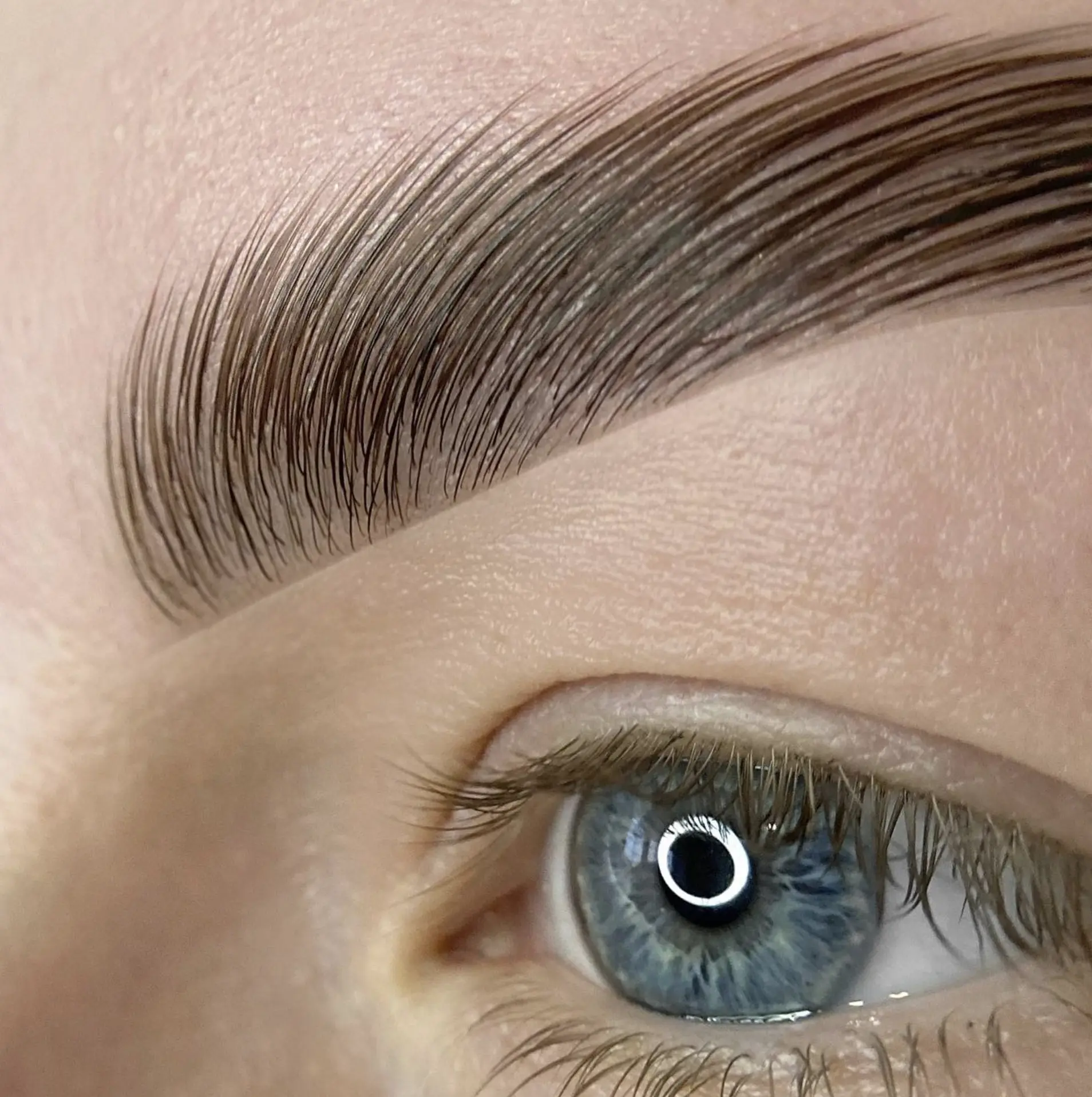
How long does it take to see improvement
| Method | Sessions Needed | Timeframe for Results |
|---|---|---|
| Saline Tattoo Removal | 2–5 sessions | 3–8 months |
| Laser Tattoo Removal | 3–6 sessions | 4–12 months |
| Colour Correction | 1–3 sessions | 6–8 weeks |
| Reshaping / Touch-up | 1–2 sessions | 4–6 weeks |
Remember, tattoo removal and brow correction take time. Follow aftercare instructions and don’t use harsh cosmetic products in between sessions.
A final word from our Brisbane studio
You can’t fix a too-dark brow overnight—it just takes strategy, the right cosmetic tattoo methods and respect for skin healing. Whether you’re dealing with pigment discolouration, ombré brows that don’t suit you, or semi-permanent eyebrow tattoo results gone wrong, we’ve got you covered.
Still unsure? Book a consult. We’ll chat options, assess your skin and plan for better brows for you.
And if you want to turn this into a career? Our eyebrow tattoo courses in Brisbane covers colour theory and brow correction, safe saline removal techniques. No more guessing games. Just smart, skilled work that delivers.
FAQ
Can I use glycolic acid to fade my brow tattoo?
No. Glycolic acid thins the skin and disrupts healing—especially for brow correction work.
What’s best for sensitive skin types?
Saline removal is usually better than laser for clients with sensitive skin or rosacea.
Can I colour correct without removing pigment?
Only if the pigment is faded enough. Otherwise, a neutraliser ink won’t take properly.
Are feathered brows easier to fix than powder brows?
Not necessarily. It depends on pigment depth, technique used and your skin type.
Is corrective tattooing painful?
We use topical anaesthetic creams. Most clients compare it to light scratching.
